To the lecture series English top page
Comments on Lecture 15 "Ambiguous Objects with Six Interpretations"
Comment 1. Why is it difficult to make all the edges vertical when we use only two mirrors?
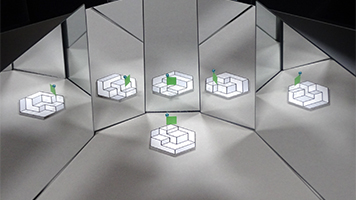
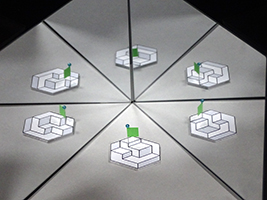
When we display an amgibuous object with six interpretations using five mirrors, we can make all the six appearances of the object strictly vertical with respect to the direction of the gravity. This is because we can tune the orientations of the five mirrors independently.
When we use only two mirrors, on the other hand, it is difficult to adjust the postures so that all the six appearances oriented strictly vertical. This is because we cannot avoid the effect of the perspective projection. Theoretically, we can make all the appearances strictly vertical by placing the viewpoint at infinity. However, it is impossible because we place the camera in a finite distance.
Comment 2. Convex vs nonconvex pictures
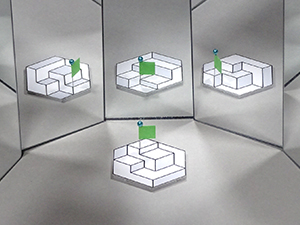
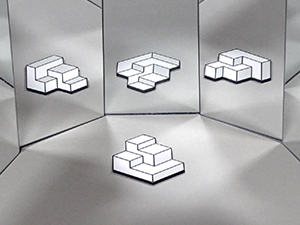
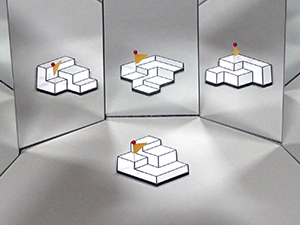
The left image is an expanded version of the center part of the five-mirror display of the six-interpretation ambiguous objects. We can see that all the appearances look natural.
The center image show the object obtained by cutting the thin walls from the object in the left image. We can see that the two side mirrors create natural appearances of the objects, whereas the center mirror gives a little unnatural appearance. Some people perceive a surface consisting of thin plates and orienting upword, but most people perceive an upside-down structure seen from below. This upside-down interpretation cannot be avoided even when we insert a flag emphasizing the direction of the gravity, as shwon in the right image.
This might be because our brains prefer thick objects to thin-plate structures.
Therefore we should not use pictures with non-convex silhouettes when we make the six-interpretation ambiguous objects. The same remark should be applied when we make the height-reversing objects. On the other hand, we can use non-convex pictures when we make the triply ambiguous objects.




